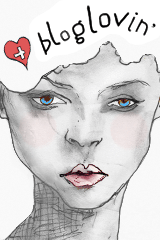*This is a collaborative post*
If you have young children or are ever around them, you'll know just how inquisitive their minds are and how many questions they like to ask. My two youngest nephews are indeed going through this phase. Apparently young children’s brains are stimulated by bright colours although when babies are born, they initially only have monochrome vision and are unable to distinguish the difference between colours. It is not until around eight months when their colour vision is fully developed. By three to four years, a child can begin to recognise and name basic colours. Frequent exposure can really help strengthen this skill.
Aside from being aesthetically pleasing to a child, colour can benefit a child’s early years development. Infinite Playgrounds, educational play area designers, have provided us with more of an insight.
The benefits of colour
There are many benefits to a child being frequently exposed to colour, and this varies according to their age.
As mentioned above, a baby is not born with coloured vision and
their attraction to colour only comes with time. At eight months old, they begin to notice
bright colours and this stimulates their minds. Exposing a baby to different
shades of the same colour can help them make important colour connections early
on in life rather than surrounding them with the same primary colours. Experts
have said that showing patterns to a baby is also important as it provides visual
and cognitive stimulation for a growing baby as they begin to focus on what they can
see.
It is important that a child can differentiate between
colours and know their appropriate names, even down to the different hues (navy
blue, sky blue). Learning these colours allows them to recognise significant
visual hues such as red as a code for danger and the meaning behind traffic
lights. It is useful outside of the curriculum too - for instance knowing the difference
between a red and a blue coloured tap.
Being able to know the different colours helps with their
speaking, reading and writing skills too. Describing an object without saying
its colour is incredibly difficult! Similarly, when they are exercising their imagination
when creating a story, colour is an important part of descriptive techniques.
Research has proven that colour can impact mood, wellbeing,
productivity and behaviour. Some experts claim that different colours enhance
learning in different ways:
· Blue is a colour that encourages creativity, if
overused however, it can bring the mood down in a room. A cool blue enhances
relaxation levels in individuals.
· Yellow is a colour of happiness for children as
it is associated with sunshine. This can lift the mood and excite a child due
to its vibrant appearance.
· Orange is said to enhance critical
thinking and memory.
A colourful classroom is going to make for a more enjoyable environment for a teacher too. It gives them various colours to refer to when teaching and creates an overall
pleasurable place to work. Research has shown that colours are also more memorable
than monochrome. A bright and colourful classroom makes new learned
experiences stick in the mind.
How to introduce colour into teaching
As we can see, learning about and being surrounded by colour
is beneficial for many. From decorating your classroom to introducing games
based on colour, there are plenty of ways that you can incorporate colours into the classroom.
For outdoor learning, consider colourful playground canopies and parasols. These can sit over areas of a playground, allowing
the sun to shine through and create many colourful patterns for the children to
enjoy. Pupils can trace shadows of the patterns on the floor with chalk and
learn how they move throughout the day with the sun.
Inspire a conversation about cultural differences and
diversity with colour. Talk about how colours have different meanings in
various countries, for example red apparently signifies good luck in China and green is a
colour of independence for Mexicans. Encourage children to use colour to create
their own national flags and teach them more about the country.
For younger children, encourage sensory developments with
colourful playmats and toys. Research has highlighted the importance of messy
play too. If this is a new term for you, it's where children can take part in unstructured play and get their
hands dirty! Let them play with brightly coloured foodstuff such as jelly and
develop their fine motor skills too.
There are simple ten-minute games that you could also add onto
the end of any lesson. How about colour eye-spy, colour matching memory
games or presenting coloured flashcards and encouraging pupils to name them?
FOLLOW GIRLGONEDREAMER:
Twitter | Facebook | Bloglovin' | Instagram
Subscribe to GirlGone Dreamer by Email
Twitter | Facebook | Bloglovin' | Instagram
Subscribe to GirlGone Dreamer by Email



No comments :
Post a Comment
Note: only a member of this blog may post a comment.